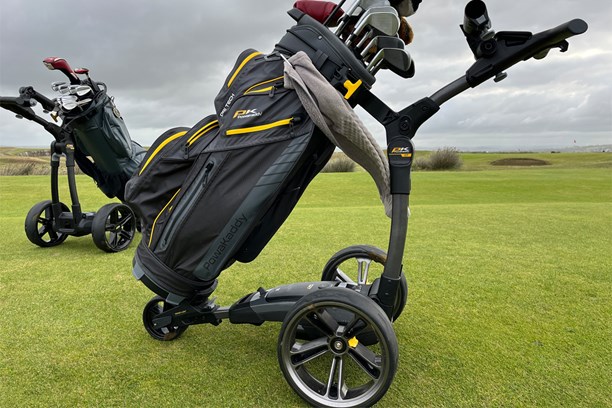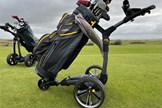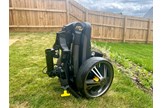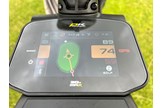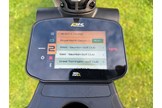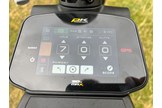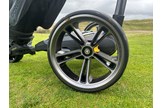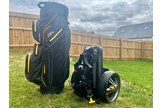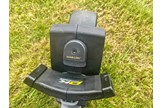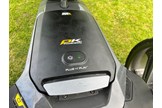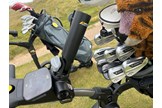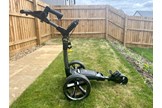I can’t see why you’d buy any other golf trolley… PowaKaddy CT8 GPS Review
Last updated:
-
At a glance
- TG Rating
- Owner Rating
-
Pros
- Very compact for storage and transportation
- Quick and easy to fold up/unfold
- Battery lasts beyond expectation
- Superb GPS screen and functionality
-
Cons
- 'Automatic Distance Function' could be easier to use
What we say...
The PowaKaddy CT8 GPS folds down smaller than any other electric golf trolley, while offering everything you need when unfolded. The perfect combination, or are there any drawbacks? My review finds out…
PowaKaddy are one of the two leading golf trolley brands and make some of the best golf trolleys available. They have an extensive range of push trolleys and electric trolleys, including the PowaKaddy CT8 GPS I’m testing here.
The unique selling point of the CT8 is how compact it is when folded down. If you’re short on space in the car or at home, the CT8 seems like a good option, but do good things come in small packages? Let’s find out…
The world's smallest touchscreen GPS electric golf trolley.
Pros
- Very compact for storage and transportation
- Quick and easy to fold up/unfold
- Battery lasts beyond expectation
- Superb GPS screen and functionality
Cons
- 'Automatic Distance Function' is not as easy to use as it could be
| Weight: | 9.9kg (without battery) |
| Dimensions: | 510mm x 425mm x 375mm (folded) 955mm x 555mm x 1170mm (unfolded) |
| Warranty: | Two years on the trolley | Five years on the battery (if registered) |
Size matters
Given the CT8 is all about being compact, let’s start there. The folded dimensions are:
Height: 510mm
Width: 425mm
Depth: 375mm
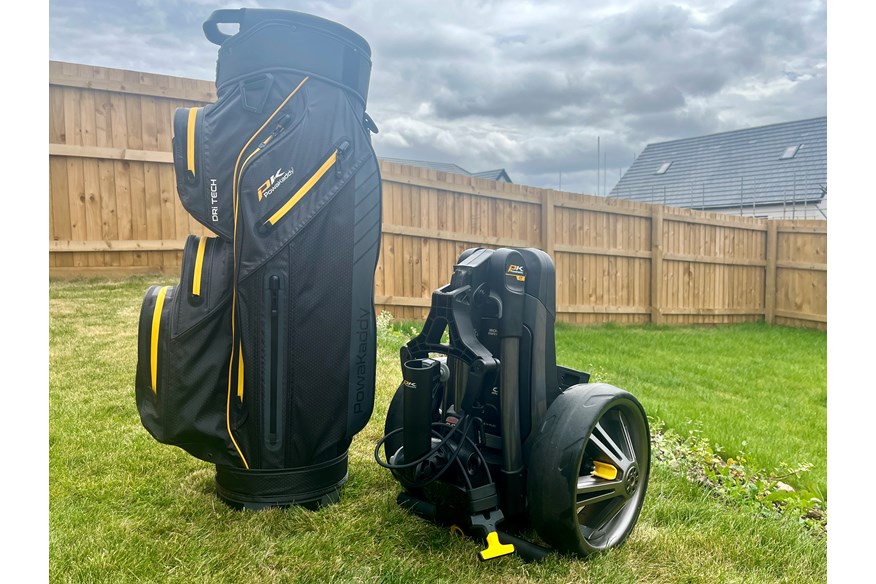
If that’s difficult to picture, it’s roughly the size of a large backpack. I’ve popped it next to the PowaKaddy Dri Tech cart bag here for scale. For context, here are the dimensions of the PowaKaddy FX5 (a normal-size golf trolley) when folded down:
Height: 805mm
Width: 560mm
Depth: 346mm
As you can see, it’s a noticeable difference, and it makes the CT8 easy to store at home or fit into the car alongside other things. It folds down 35% smaller than its nearest competitor.
The weight of the two is almost identical, with the CT8 at 9.9kg and the FX5 at 9.6kg (both without a battery).
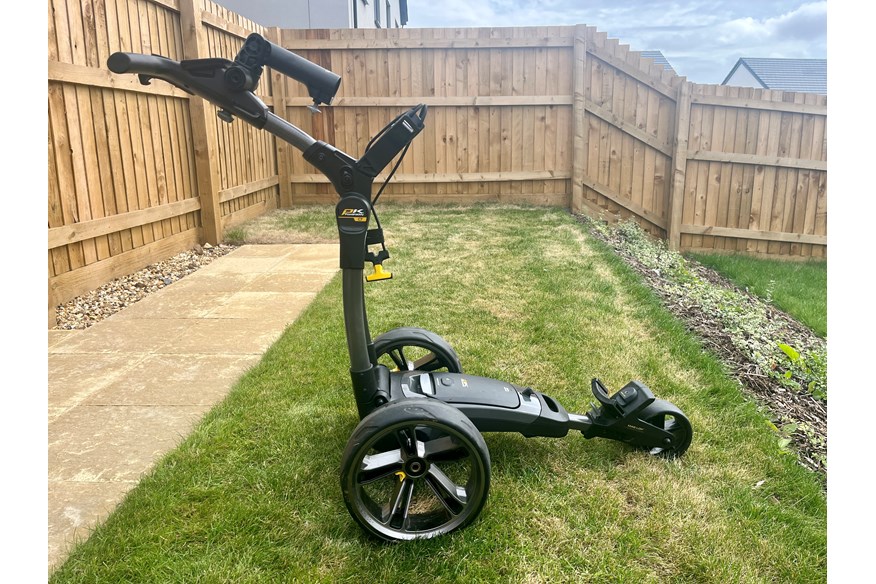
Maybe it’s the minimalist in me, but I don’t see why you wouldn’t opt for a compact option when you’re not compromising on anything to do so. Unfolded, the CT8 is the same size as any other trolley, so it’s like having a Smart car when you’re parking and a normal-sized car the rest of the time.
If you really want to save space, the rear wheels can be easily removed and inverted, which decreases the footprint even further. I don’t tend to bother doing that, though, as it’s small enough without that extra step and it’s that kind of faff that has put me off using golf trolleys in the past.
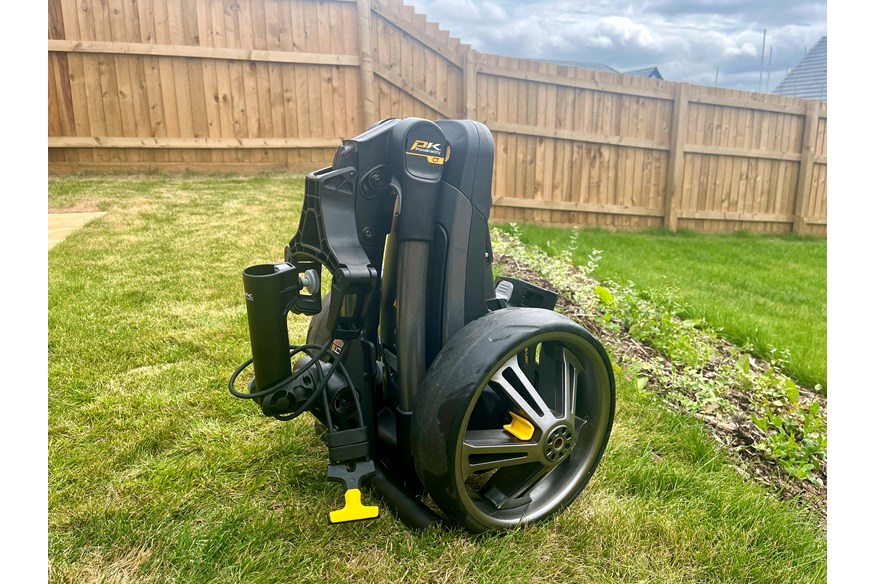
Folding and assembly
I often use a carry bag instead of a trolley, partly because I enjoy the speed and simplicity of being able to arrive at the golf club, grab my bag from the car and go. I’ve seen people wrestling with trolleys in the car park, struggling to get them up or down, or to get their bag attached securely, and thought, ‘No thanks’.
But there’s none of that with the CT8. The folding mechanism is quick and easy, with grey plastic indicating the bits you need to push to get things moving. The battery clicks into place easily and you don’t need to remove it to fold the trolley down, although you will need to take it out for charging.
Two straps keep your bag securely in place, although you can dispense with the bottom one if you have a PowaKaddy bag thanks to their ‘MAG-LOK’ system.
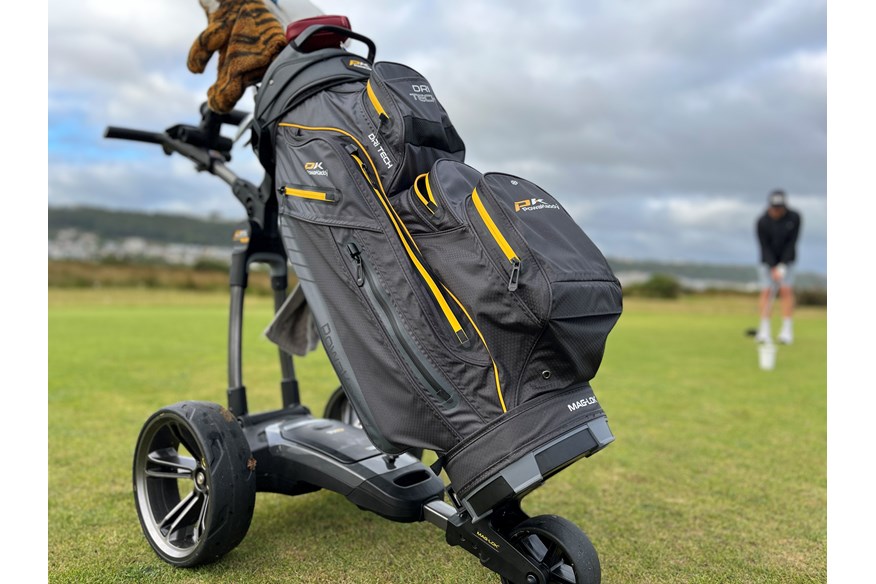
The magic of MAG-LOK
The MAG-LOK system lets you remove the bottom strap from the trolley and use a magnet instead to keep your PowaKaddy bag in place. You have to attach the magnet with a Hex key (which comes provided) the first time you use it but then it stays there for as long as you want.

A magnet in the bottom of all PowaKaddy cart bags then means the two click together when you mount the bag on the trolley. I’ve found it to be completely secure but it’s also really easy to get the bag off again after your round. I don’t know how they’ve combined those two things, but it’s a clever and useful bit of kit.
If you opt to use a non-PowaKaddy bag you can just reattach the original lower strap and do it the old-fashioned way.
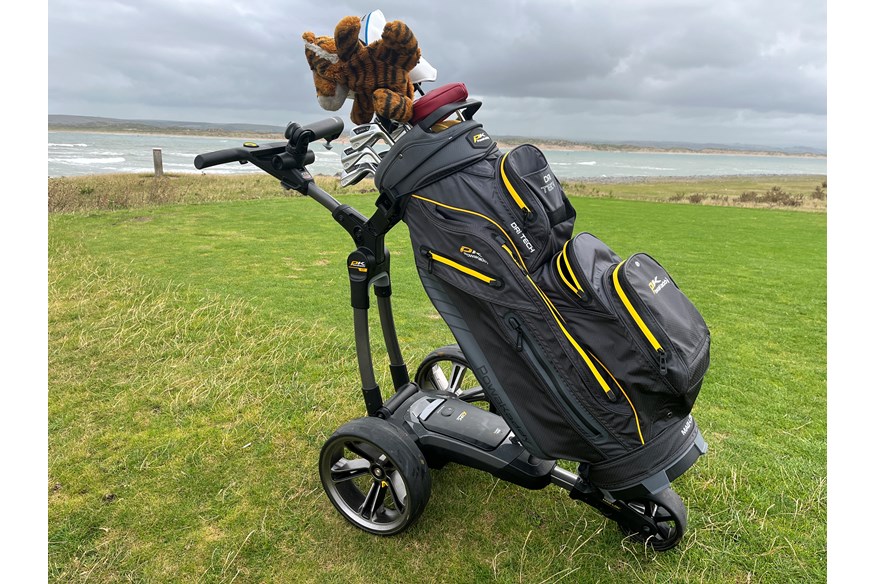
Using the CT8 on the course
Once the CT8 is unfolded, it looks the same as any other non-compact PowaKaddy trolley. The wheels look great – I’ve actually had comments from a couple of people on those – and the whole package has a sleek appearance.
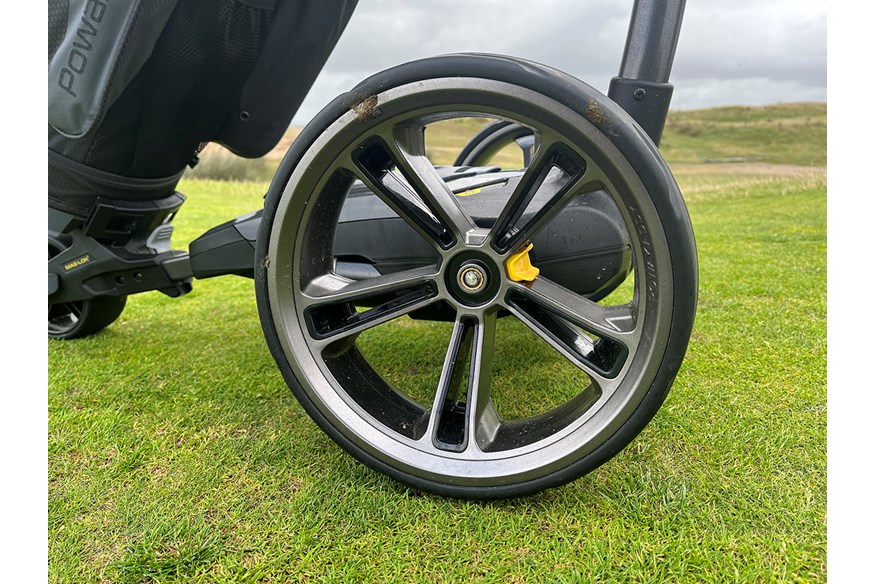
It’s smooth and quiet to run, and everything feels very stable. There’s an optional ‘Electronic Braking System’ which stops the trolley picking up too much pace when going downhill – useful if you play very hilly courses.
The yellow control dial is straightforward to use. You simply rotate it clockwise to increase the speed, anti-clockwise to decrease, and press the button to stop or start. You do have to give the button a solid push, which I think is to stop you accidentally pressing it and having the trolley stop abruptly in front of you, but there were a few occasions during my first couple of rounds with the trolley where I thought I’d pressed stop and realised I hadn’t when the trolley kept moving.
The CT8 features ‘Automatic Distance Function’(ADF), which lets you set the trolley off on its own a certain distance before coming to a stop, but I found it slightly unintuitive to use. It only seems to work when the trolley is starting from stationary, whereas I feel this feature is most useful when you’re walking along and want to set the trolley off towards the next tee without breaking stride. You also have to hold down the central button for slightly longer than I’d like in order to activate it. These are minor niggles, but they were enough to make me not bother with the ADF most of the time.
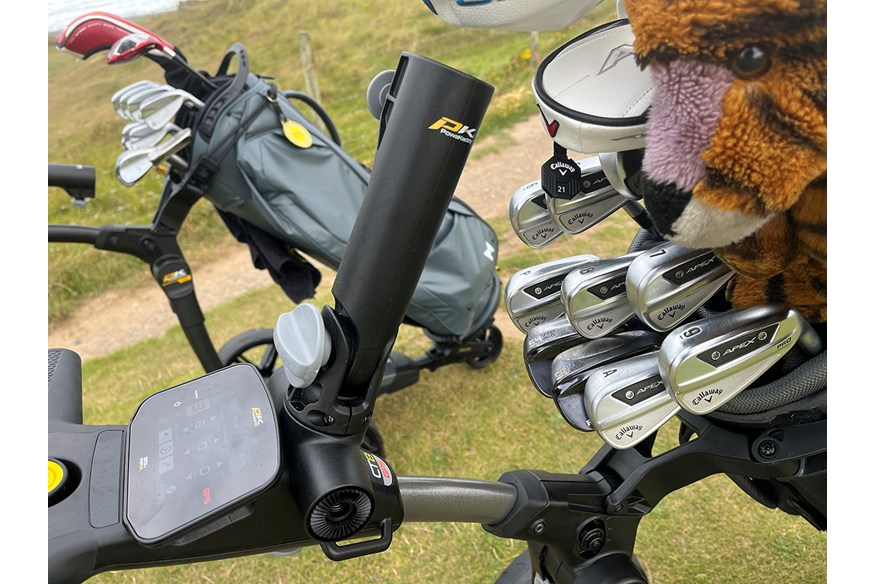
You can get a variety of accessories, like a cup holder, scorecard holder, etc. I grabbed an umbrella holder which does its job but seems slightly overpriced at £30 for a few pieces of plastic.
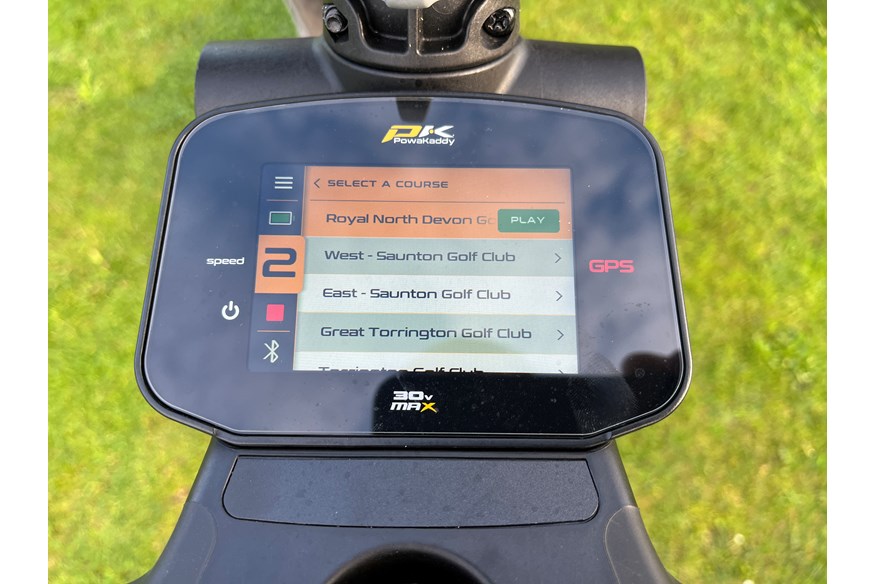
Touchscreen and GPS
The CT8 features a 3.5” full-color touchscreen display which is very clear to look at and easy to use. There’s also a CT6 GPS option which features a 2.8” screen. The CT6 GPS trolley is the same size as the CT8, offers slightly less functionality (which I’ll come onto in a minute), and isn’t any cheaper, so I’d definitely plump for the CT8.
The screen is responsive and easy to use, even with a golf glove on.
It shows all the obvious things like the current battery level, the speed you have set, whether you’re in stop or go mode, current time, and Bluetooth connectivity.
It’s also preloaded with over 40,000 courses and serves as a highly functional GPS. You can see the hole number, par, and stroke index, plus yardages to the front, middle, and back of the green. The numbers display clearly, update quickly, and I found no issues with accuracy.
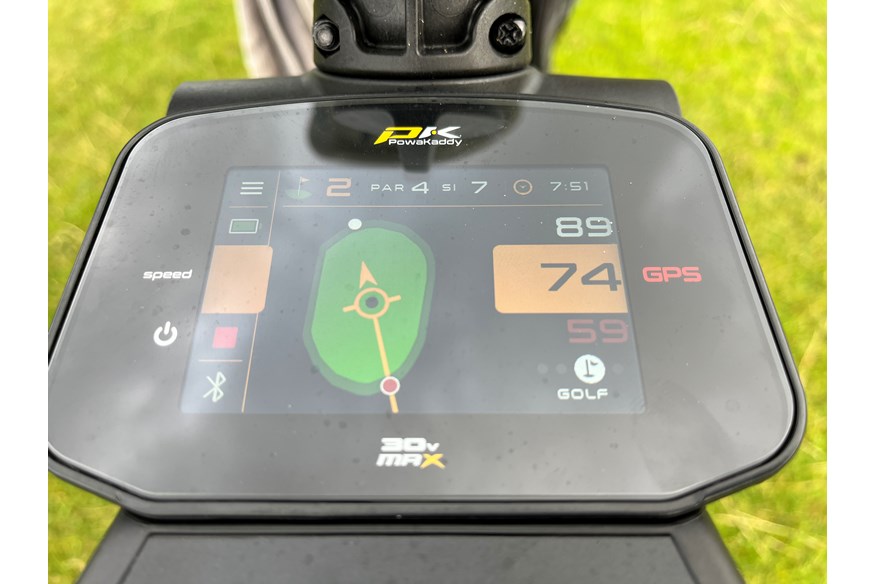
You can place the pin to get distances to today’s flag location, get distances to hazards, measure shot distance, as well as track your score and basic stats like the number of putts you took and whether your tee shot was straight, left, or right.
There’s a USB-C charging port too.
I was very impressed by how quickly it found the local courses, which it lists in order of proximity. I use a Garmin watch as my normal on-course GPS and the trolley loaded the courses quicker of the two.
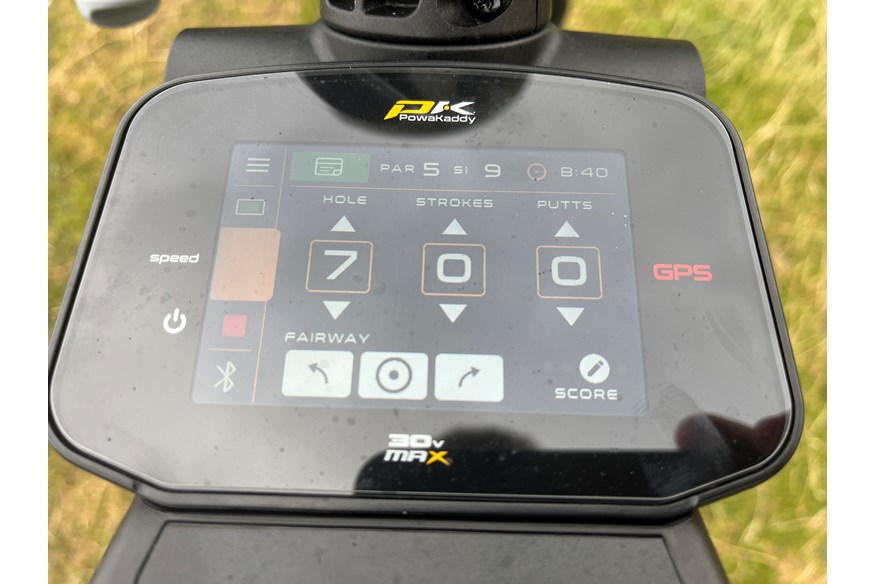
You can update the software using the PowaKaddy app and there’s no subscription charge for any of the functionality.
The CT6 is available with or without GPS. The CT6 GPS offers most of the same functionality as the CT8, but without the active green view and hazard info or the scorecard and stat-tracking, while the standard CT6 (non-GPS version) just displays the basics like speed, time, and battery level.
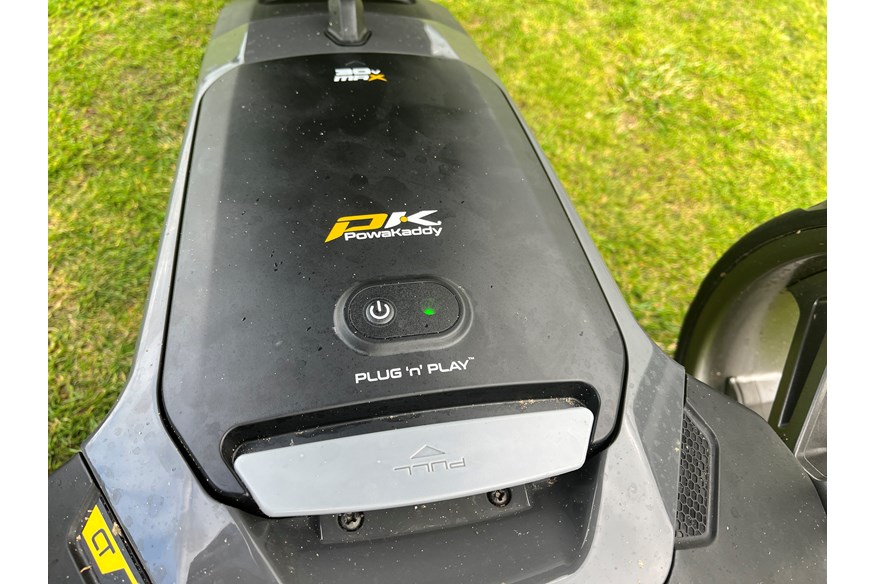
Battery life
PowaKaddy offer three different lithium batteries – ‘Standard’, ‘XL’, and ‘XL-Plus’.
I’ve been using the ‘Standard’, which is technically only good for 18 holes, but I managed to do two rounds on a single charge and with more than a week between them. The battery was getting low towards the end of that second round, as you’d expect, and it’s probably not recommended to do that, but what can I say? I’m a rebel. Besides, it’s good to know that there might be some extra juice available if you decide to go out for some extra holes.
Obviously the battery usage will depend on the terrain and how much you’re using the touchscreen, but even with heavy interaction on a hilly course I’m sure the standard battery will easily cover 18 holes with a bit to spare.
Charging is pretty simple, although it’s slightly annoying that the battery has to be placed on its side to charge as the connectors are underneath and the status light is on top.
PowaKaddy say charging takes five hours but I’ve found it to be considerably quicker than that.
The batteries are ‘Plug ‘n’ Play’ which means you just click it into place and you’re good to go – no wires required.
The CT8 comes with a two-year warranty on the trolley and an extended five-year warranty on the battery, provided you register it with PowaKaddy.
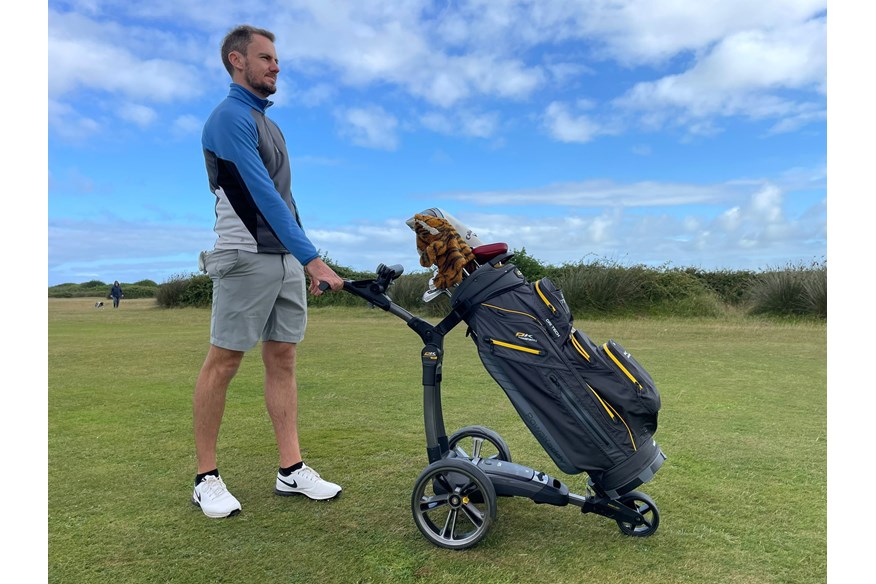
PowaKaddy CT8 GPS: My verdict
For anyone bothered about storage space but still wanting a premium golf trolley with all the bells and whistles, you simply can’t beat the PowaKaddy CT8 GPS. I personally can’t see why you’d opt for a trolley that is bigger when folded down and offers nothing extra when assembled. The only reason not to buy the CT8 would be if you want a remote control trolley, in which case the PowaKaddy RX1 would be a good option.
Hopefully I’ve covered everything you want to know about the CT8 GPS, but if not just drop me any questions on Twitter.
About the author

Rob McGarr – Contributing Editor
Rob has been a writer and editor for over 15 years, covering all manner of subjects for leading magazines and websites.
He has previously been Features Editor of Today’s Golfer magazine and Digital Editor of todays-golfer.com, and held roles at FHM, Men’s Running, Golf World, and MAN Magazine.
You can follow him on YouTube where – depending on what day of the week it is – he’ll either be trying his best to get his handicap down to scratch or shoving his clubs in a cupboard, never to be seen again.
Rob is a member at Royal North Devon, England’s oldest golf course, where he plays off a three-handicap.
